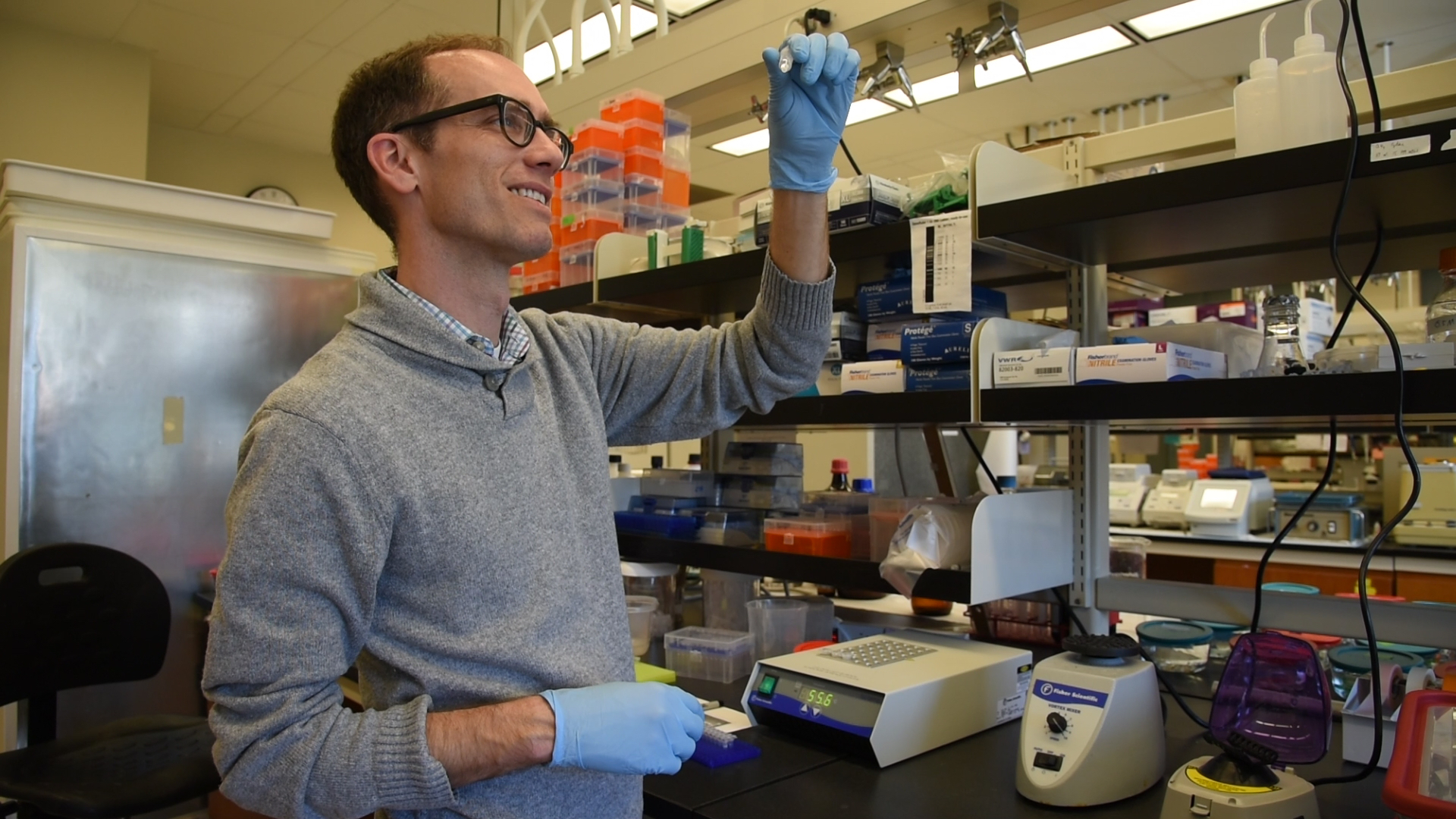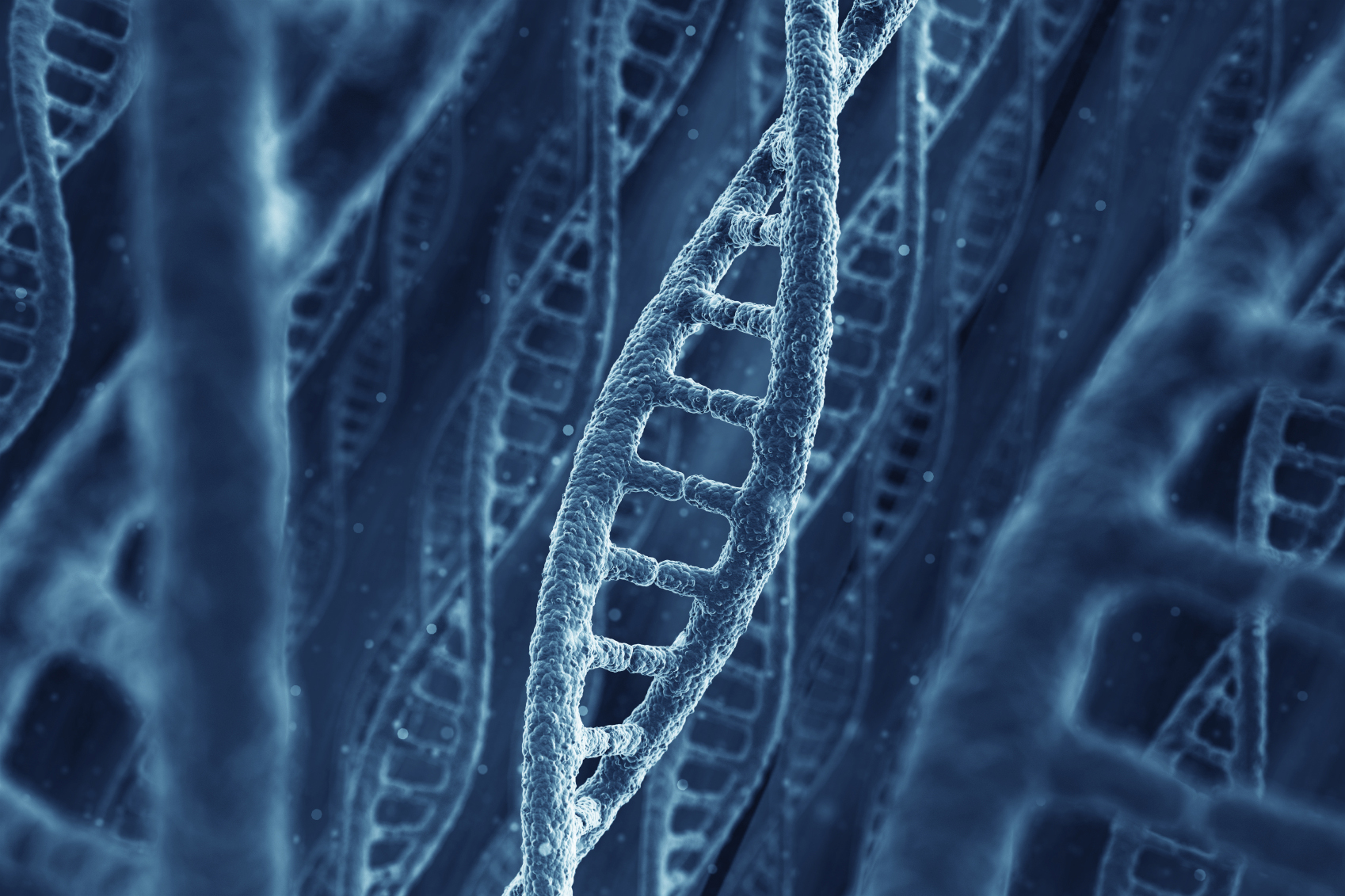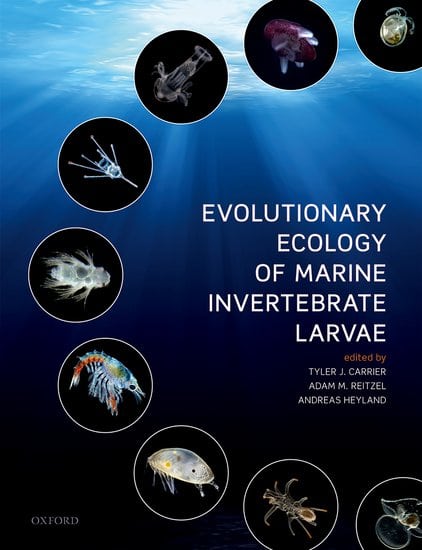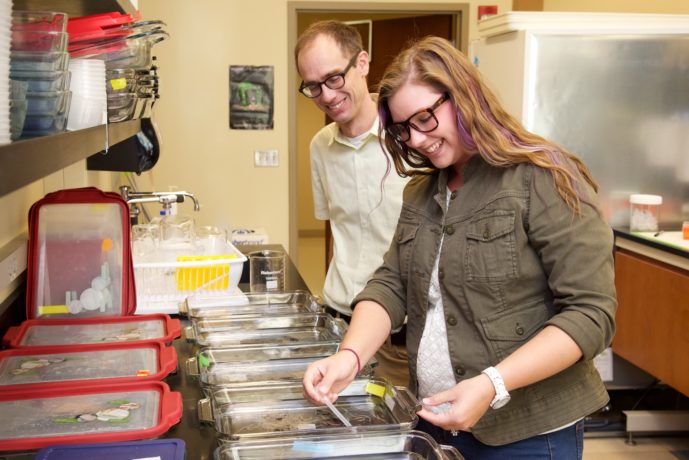A sea anemone, with its columnar, jelly-like body and bouquet of tentacles that protrude from its head like a Medusa curlicue mass, looks every bit a weird sea creature. For UNC Charlotte’s Adam Reitzel, this curiosity of a marine invertebrate also holds fascinating clues on how changes in the environment may influence molecular mechanisms such as circadian clocks.
The sea anemone, Nematostella vectensis, is in the phylum Cnidaria (“nye-dare-e-uh”) and is found along the Eastern seaboard from Maine down to Jamaica and Puerto RicoFlorida. Many of the anemones in Reitzel’s biological sciences lab come from the North Carolina coast.
Considered a model organism – as the sequencing of its genome has provided a map to gene evolution – sea anemones offer an ideal biological system for use in a wide range of comparative studies, including Reitzel’s investigation into circadian clocks.
 “The circadian clock is responsible for how we function,” Reitzel says. “Why do we wake up when we do? Why do we get hungry when we do, and why is this very predictable? The circadian clock is why we experience jet lag or tend not to be ourselves after we pull an all-nighter.”
“The circadian clock is responsible for how we function,” Reitzel says. “Why do we wake up when we do? Why do we get hungry when we do, and why is this very predictable? The circadian clock is why we experience jet lag or tend not to be ourselves after we pull an all-nighter.”
Evolutions of Stress Response
Reitzel’s lab uses sea anemones to learn more about how organisms may entrain their clocks when faced with disruptions. More broadly, his research considers the evolution and mechanisms of stress response and the genetic variation and adaptation of coastal invertebrates, including the purpose of the circadian clock.
“We are asking two fundamental questions,” he says. “One is from an evolutionary perspective. How does a sea anemone, in this case, have a circadian clock and how similar is it to the human clock? And two, how does that clock work? If we interrupt a sea anemone’s circadian clock, what does that do to that anemone? What does it do to its physiology?”
A key question is determining whether a sea anemone takes in environmental cues such as changes in light and, as a result, entrains its circadian clock to anticipate and adapt to environmental changes.
“There’s plenty of literature to suggest disruptions in the circadian clock can result in increased susceptibility to diseases,” he says. “We want to know, and this relates back to the non-human model, if we interrupt a sea anemone’s circadian clock, what does that do to that anemone?”
 In a locked room near Reitzel’s lab, a video recorder captures the movement of sea anemones in a dish as they are exposed to light. A computer remotely controls the intensity of the light and whenit is turned off and on. Whitney Leach, a graduate student in Reitzel’s lab, uses light because it is the most predictable environmental cue.
In a locked room near Reitzel’s lab, a video recorder captures the movement of sea anemones in a dish as they are exposed to light. A computer remotely controls the intensity of the light and whenit is turned off and on. Whitney Leach, a graduate student in Reitzel’s lab, uses light because it is the most predictable environmental cue.
At the conclusion of the controlled manipulations of the environment, the lab team studies the tissue of the anenomes, specifically looking at the genes and proteins to assess what may have changed as a result of the environmental differences.
International Collaboration
Among Reitzel’s funding is the prestigious Young Investigators’ Grant from the Human Frontier Science Program, one of only seven awarded worldwide in the year he received the award. Reitzel and colleagues are looking at how bacteria and other microbes influence the biology of sea anemones, particularly in the context of climate change. Reitzel’s collaborators are Sylvain Forêt of the Australian National University and Sebastian Fraune of the Christian-Albrechts University of Kiel, Germany.
“We are looking at how organisms live naturally,” Reitzel says. “If they can respond and adapt by changing critical tagsgene expression or how they associate with particular types of bacteria or gene functions, it tells you how organisms are projected to survive in a changing environment.”
It has long been known that animals can adapt to their environment through changes to their DNA, or their genetic code. More recently, research has shown that non-genetic components may be important, as well — and in some cases essential — for processes such as health, aging and development.

For example, genetically identical twins, despite having identical DNA, are not copies of one another in appearance, behavior, or other characteristics that are dependent on their environmental experiences. Two central non-genetic contributors to individual variation are chemical modifications of the DNA, or epigenetics, and associations with different bacterial species or microbial symbioses.
Global Warming Research
“Evidence is growing that climate change has profound effects on marine ecosystems, yet our understanding and ability to predict how species respond in these ecosystems is still very limited,” Reitzel says. Unlike the genes of an animal, epigenetics and microbial composition can rapidly alter due to changes in the environment, making them ideal mechanisms to study how species respond to environmental threats like global warming.
The researchers are modeling their study on the anemone Nematostella vectensis, in which they are monitoring physiological, epigenetic, and microbial changes associated with thermal acclimation. They are separating the effects of each change through bacterial experimentation, and are carrying out gene knockdown and over-expression experiments to determine the function of critical host genes in epigenetic regulations and in the plasticity of the microbiota.
This research includes fieldwork in estuaries throughout the United States, including in North Carolina.
The aim of this research is to determine how epigenetic regulations and microbial communities participate in thermal acclimation of a coastal marine species residing in a dynamic temperature environment, and how these non-genetic factors interact with each other. The researchers hypothesize that changes in the microbial community improve the thermal tolerance of the host, and that the epigenetic landscape is responding both to the shifts in temperature and to the altered microbial composition.
“We believe these results will not only have important consequences for our understanding of the response of marine species to climate change, but will more broadly give us insight into unanswered questions regarding the role of epigenetic regulations and microbes in animal ecology and evolution,” Reitzel says.
 The research team also is exploring how epigenetics, microbiomes, and genomic mutations intersect, as they are largely studied in isolation at the moment.
The research team also is exploring how epigenetics, microbiomes, and genomic mutations intersect, as they are largely studied in isolation at the moment.
Reitzel joined UNC Charlotte in 2012 and received his doctoral degree in 2008 from Boston University. He has been on the review editorial board for Frontiers in Marine Molecular Biology and Ecology and has authored more than 70 peer-reviewed journal publications and book chapters, along with a recent book he co-edited with one of his graduate students, Tyler Carrier, along with Andreas Heyland of University of Guelph, Canada. The book is described as the first definitive book on the ecology of marine invertebrate larvae for more than 20 years and is noted for its establishing a fresh agenda for future research.
Scientific exploration first came into focus for Reitzel when he was a high school student in an advanced biology course and when he spent a summer as an undergraduate researcher on the West Coast with Brian Bingham of Western Washington University, as part of a Research Experience for Undergraduates program.
“I remember those times others took a chance on me and gave me the opportunity to conduct a research project, with mentoring, but allowing me to be very independent,” he says. “I got to come up with my own ideas and dedicate myself, and the work became mine as something I was really invested in. That had a huge impact on me to get into the field and to do this for a long time.”
Words: Leah Chester-Davis and Tyler Harris | Images: Lynn Roberson and Henry Gilmore. Top image: Reitzel and student Whitney Leach in the lab.








